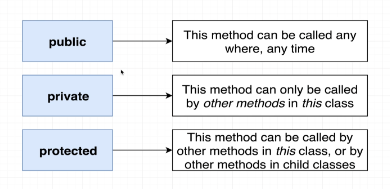
TypeScript enhances JavaScript’s object-oriented programming capabilities by adding features like classes and access modifiers. Class access modifiers in TypeScript help control the visibility and accessibility of class members (properties, methods) within a program. The three primary access modifiers are public, private, and protected.
Public Modifier
The public modifier is the most permissive access level. When a class member is marked as public, it can be accessed from anywhere, whether inside the class, from instances of the class, or even from derived classes. If you don’t set a modifier, it is automatically assigned public.
class Animal {
public name: string;
constructor(name: string) {
this.name = name;
}
public makeSound() {
console.log("Generic animal sound");
}
}
const dog = new Animal("Dog");
console.log(dog.name); // Output: "Dog"
dog.makeSound(); // Output: "Generic animal sound"
Private Modifier
The private modifier restricts access to class members. A private member can only be accessed by other methods within the same class.
class Human {
private socialSecurityNumber: string;
constructor(ssn: string) {
this.socialSecurityNumber = ssn;
}
getSSN() {
return this.socialSecurityNumber;
}
}
const john = new Human("123-45-6789");
console.log(john.getSSN()); // Output: "123-45-6789"
console.log(john.socialSecurityNumber); // Error: Property 'socialSecurityNumber' is private and only accessible within class 'Human'.
Protected Modifier
The protected modifier is like private, but it extends the accessibility to derived (or child) classes. Members marked as protected can be accessed by methods in the same class and methods in derived classes.
class Vehicle {
protected speed: number;
constructor(speed: number) {
this.speed = speed;
}
}
class Car extends Vehicle {
constructor(speed: number) {
super(speed);
}
public showSpeed() {
console.log(`The speed is ${this.speed} mph.`);
}
}
const myCar = new Car(120);
myCar.showSpeed(); // Output: "The speed is 120 mph."
Conclusion
Understanding the different access modifiers — public, private, and protected—is crucial for effective TypeScript programming. They provide a way to encapsulate data and control what can be accessed and modified, making it easier to manage large codebases and collaborate with other developers.
,





